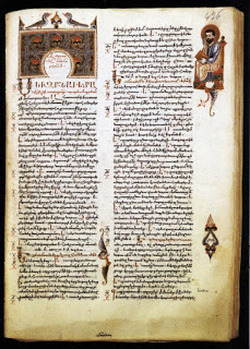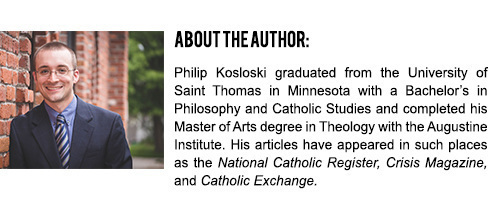
To continue our series on the different parts of the Holy Sacrifice of the Mass, we conclude our look at the Introductory Rites with “The Collect” (aka the Opening Prayer) and then move on to take a look at the “Liturgy of the Word”
“Next the priest invites the people to pray. All, together with the priest, observe a brief silence so that they may be conscious of the fact that they are in God’s presence and may formulate their petitions mentally. Then the priest says the prayer which is customarily known as the Collect and through which the character of the celebration is expressed. In accordance with the ancient tradition of the Church, the collect prayer is usually addressed to God the Father, through Christ, in the Holy Spirit, and is concluded with a trinitarian…ending.” (GIRM) Besides being rich in theological meaning the Opening Prayer has a long history that goes all the way back to ancient Rome. “Historically that title (Collect) recalls the old custom of Urban Rome where, about the fourth century, it was the practice for the whole Christian community to come together in one church that they might proceed with solemnity to the sanctuary chosen for the celebration of the day’s Mass; in this sense the Collect is the prayer of the plebs collecta, the prayer of the assembled people.” (TM) Today, the priest gathers “together, as if in one sheaf, all our hopes and all our good purposes…to offer them to God” and so continues this tradition of a unified prayer of the people at the start of every Mass. After the Collect, starts the “Liturgy of the Word.” “The main part of the Liturgy of the Word is made up of the readings from Sacred Scripture together with the chants occurring between them. The homily, Profession of Faith, and Prayer of the Faithful, however, develop and conclude this part of the Mass. For in the readings, as explained by the homily, God speaks to his people, opening up to them the mystery of redemption and salvation and offering them spiritual nourishment; and Christ himself is present in the midst of the faithful through his word. By their silence and singing the people make God’s word their own, and they also affirm their adherence to it by means of the Profession of Faith. Finally, having been nourished by it, they pour out their petitions in the Prayer of the Faithful for the needs of the entire Church and for the salvation of the whole world.” (GIRM) The history behind the Liturgy of the Word is very ancient and even extends before the Christian Church began. To “seek the origin of these readings, we would have to delve into the most ancient of Christian usages, and to go, in fact, even beyond them to practices dear to the heart of devout Israel. The Service of the synagogue knew such readings from the Law and the Prophets. Have we not seen Jesus reading Isaias to his fellow Jews (Luke 4:16,21)? The early church faithfully preserved this usage: reading from the sacred books bulked large in the primitive liturgies, and it would be surprising to the first Christians were they now to return and hear only the…brief scraps which are left in today’s Mass. “At first, these readings were neither brief nor formally delimited beforehand…and the reader used to go on uninterruptedly until the bishop saw fit to signal him that he thought enough had been proposed for the instruction of his hearers. It was only with the appearance of the Roman Missal of 1570 that there came into general usage the…previously selected fragments…accommodated to the feast being celebrated.” (TM) In the Liturgy of the Word, we start out by first hearing a reading from the Old Testament, and then a reading from an Apostolic Letter, and then finally we reach a selection from one of the Gospels. The reasoning behind this is simple: “it shows that in the beginning God speaks to us by the agency of intermediaries, by the mouth of men who are His witnesses or confessors, who are inspired by Him to prepare us that we may later receive His own message directly.” (TM) The Liturgy of the Word allows us to hear God’s word to us and prepares us to meet him in the Holy Eucharist. Read the Entire Series
0 Comments
Your comment will be posted after it is approved.
Leave a Reply. |
MASS SCHEDULE
Tuesday - Friday: 8:00 AM Saturday: 4:00 PM Sunday: 8:00 AM & 10:00 AM RECONCILIATION
Saturday: 3:15 - 3:45 PM OFFICE HOURS
Monday - Thursday: 8:30 AM – 5:00 PM Friday: 8:30 AM – 12:30 PM Stay Connected with Our ParishWelcome from Our PastorWelcome to Christ the King Catholic Church! Ever since 1938 this parish has been assisting souls in their quest for deeper union with God. Our mission statement is essentially found in the stained glass window above the main altar: “For Christ our King.” Insofar as God made us and we belong to Him, we have come to... Read More
Archives
February 2021
Categories
All
|
Copyright © 2024 Christ the King Parish. All Rights Reserved.
Mailing address: 306 S. LaSalle St, Spencer, WI 54479
(715) 659-4480



 RSS Feed
RSS Feed